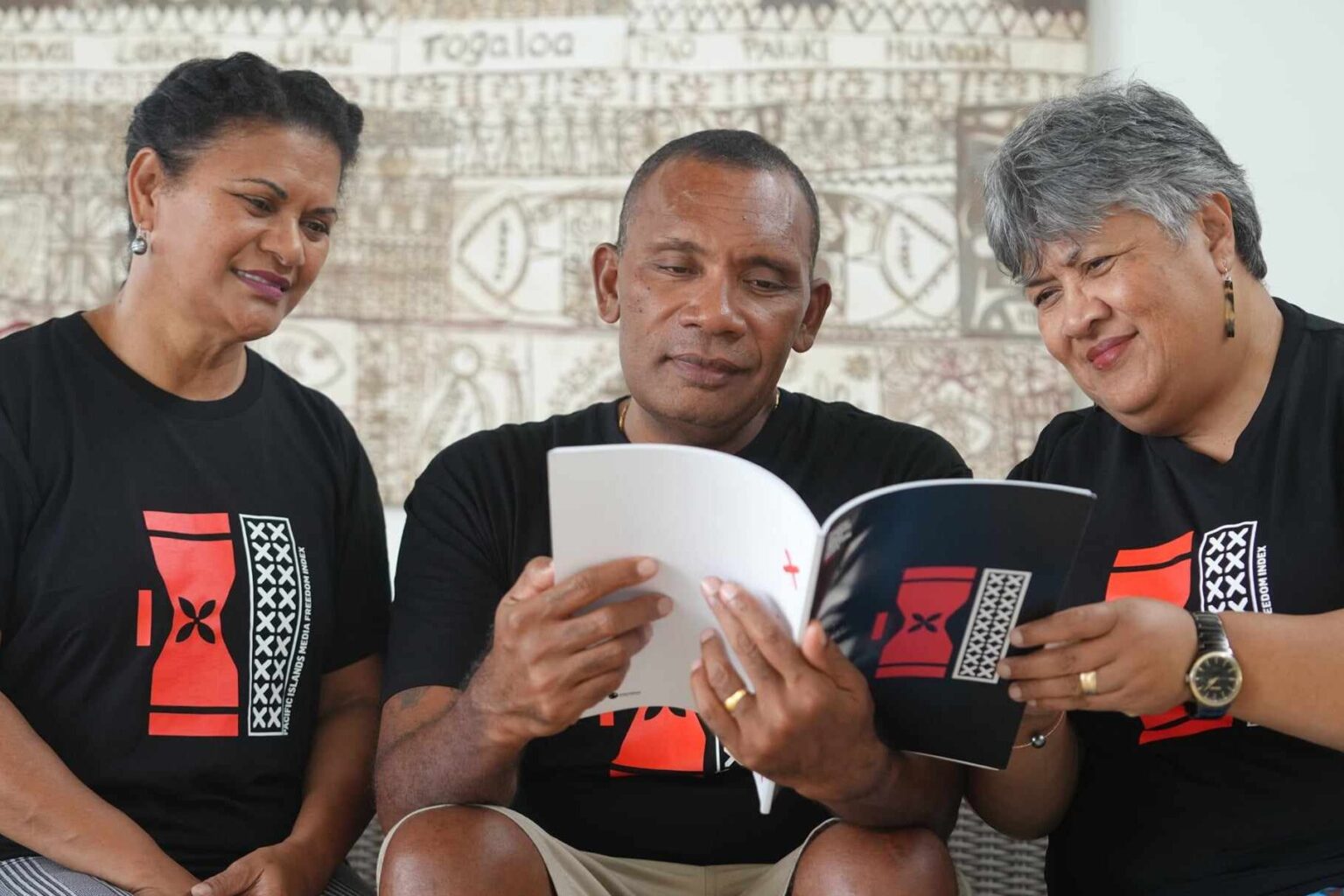
Economic and financial constraints, followed closely by social, cultural, and political pressures, pose the greatest threats to media freedom in the Pacific, according to the inaugural Pacific Islands Media Freedom Index (PIMFI) report, For Us, By Us, About Us.
Published by the Pacific Freedom Forum (PFF), a coalition of Pacific journalists formed to promote and project media freedom in the island states, the PIMFI found that a “whopping 60 per cent of journalists often practiced self-censorship due to fear of reprisals from their communities, families and others including in some cases, their governments”
In a global first the PIMFI ranks all 14 Pacific Islands nations’ according to the state of media freedoms as experienced by newsrooms in each country.
Launched this week as Pacific journalists and publishers gather for the 2024 Pacific Media Summit in Niue, the index is based on the responses of 73 editors, journalists, and media workers, many of whom have spent decades reporting the Pacific.
These responses were then used to assess the state of media freedoms in each country across five rankings, from significant challenges to media freedom to the highest: a robust and enabling environment for media freedom.
Palau, Niue, and the Cook Islands are ranked as the three top Pacific nations for media freedom in 2023 while Nauru, Papua New Guinea, and Tuvalu scored the lowest according to this index.
PFF’s current Chair Robert Iroga, editor of Solomons Business Magazine, welcomed the PIMFI report as an important first step.
“The inauguration of a Pacific Islands Media Freedom Index (PIMFI) signifies a significant achievement for all Pacific Islands journalists. We at PFF and our partner, Internews, have only been able to coordinate this work because 73 individuals stepped up and took the time to share the reality of their professional lives with us and have their say,” Iroga said.
Published with the support of the global media-strengthening NGO, Internews, the PIMFI was collated from a survey conducted by PFF earlier this year that asked Pacific newsrooms their experience in relation to 12 issues that potentially impacted media freedom in their country last year, including the legal framework, political context, economic pressures, safety of journalists, and the social and cultural environment.
Economic and financial pressures on Pacific media houses, including those from advertising, capital costs, subsidies, administration, fiscal pressure, corruption incentives, and bribes, were ranked as the top challenge to Pacific media freedom.
Social and cultural pressures on the media, including gender, public trust and credibility of the news industry, diversity, nepotism, and cultural sensitivities, ranked second.
Political and legal pressures were of significant concern, with political pressures—including State policy, the editorial balance of public media, licensing policies, and elections—ranking third and legal pressures ranking a close fourth.
For Us, By Us, About Us was launched by PFF’s three co-chairs who rotate the leadership: Robert Iroga, (Melanesia), Leilani Reklai (Micronesia) and Katalina Tohi (Polynesia).
Iroga, the Vice President of the Pacific Islands News Association (PINA), thanked Pacific Media Summit organizers in Niue for the opportunity to host the PIMFI launch.
“For decades, our Pacific Islands have been barely visible in global media freedom reports,” he said.
“PFF and PINA are the only two Pacific-led networks linked to the global freedom of expression family, and we will continue to collaborate and work on media freedom, and our next report in 2025,” he said.
Iroga stresses that this first PIMFI is a pilot and that PFF is keen to work with Pacific media colleagues to refine and improve it ahead of next year’s survey and index.
“This is a journey that must be led for us and by us, because it is about us.”

